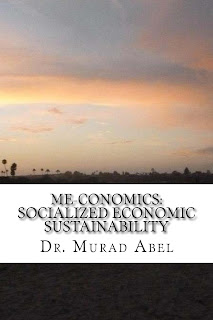A successful organizational strategy requires the
fundamental changing of behavioral patterns and economic structure to meet
environmental needs. Executives have developed the ability to adjust policies
& procedures, communicate their needs, and implement strategic approaches
but often fail to understand the cultural significance of employee thought
patterns in achieving their results. It is the agreement of employees and their
ability to understand the economic rules of their organizations that will
determine how successful the company will become.
By understanding what motivates employees to perform,
encourage proper behavior through satisfaction, and helps them find solutions
to problems through innovation an organization create a more efficient system
that can compete effectively in the market. Each organization is a
socio-economic hub that maintains cultural vantage points that will determine
either its success or its failure through specific employee behaviors.
For example, let us assume that an executive has designed a great strategy and tries to implement that strategy but ignores the complex
human behavior that will lead to the proper adoption of that strategy. The fruitation
of strategy will be determined by employee’s ability to understand the strategy
and change their work patterns to fulfill the particular goals of the
organization. When they either do not understand the strategy or feel that it
is not beneficial to their goals they will create resistance and inefficiency.
This inefficiency can be seen in absenteeism rates, wasting of
resources, resisting management decisions, poor workmanship, turnover rates and
passivity to the environment. The end result is that the organization fails to
meet the outlined objectives and continues to experience lackluster
performance. Engaging in chest pounding, discipline, hair pulling and strong
arming to turn around the situation will only create additional resistance and
lower the engagement of workers making such executive approaches
counterproductive.
The ability of encouraging, engaging, and coaxing employees
to higher levels performance and development is a constant necessity within organizations.
The particular networks and socialization aspects of the organization are
determined by the norms, values and communication strategies that organizations
adopt. Understanding the social aspects of the company will allow for the
development of stronger norms and values that are self-enforcing and
encouraging of innovation and adaptation.
Any development of strong strategy must consider both the
economic and the human elements to be successful. The book Me-conomics: Socialized
Economic Sustainability will bring readers through cultural background of
capitalism, the way in which employees make meaning of their work environment,
the development of efficient thought patterns, and the economic advantages of
furthering employee satisfaction, motivation and innovation. Decision-makers will
find benefits in furthering their understanding of strategy and its human
elements to find success for both themselves and the employees they coach.

No comments:
Post a Comment